The ancient citadel of Mdina is undoubtedly one of Malta’s gems: located in the central part of the island on high ground, its magnificent cathedral and imposing fortifications dominate the skyline.
No visitor to Malta should miss the chance of taking a stroll through its narrow, winding alleyways - an experience that seems to transport you back in time - to admire Mdina’s elegant palazzos and churches, and the spectacular panorama offered from its high bastion walls.
Inhabited since the Bronze Age, the site on which Mdina is built was chosen for its strategic location. For centuries, it evolved as the main settlement on the island, as the Phoenicians, Carthaginians, Romans, Byzantines, Arabs and many others took turns ruling Malta.
By the medieval period, Mdina was the home of the island’s nobility, the Bishop’s seat, and a citadel protecting the island’s inhabitants from frequent pirate incursions.
Although Valletta’s construction in the 1560s lessened Mdina’s importance, a strong earthquake in 1693 led to major reconstruction and a revival of the city.
Since then, Mdina has changed very little and is today a fantastic melting pot of the numerous foreign influences that have over time been beautifully welded together: a city with plenty of hidden details and anecdotes.
Mdina Gate
Rebuilt after the earthquake of 1693 to the designs of the French architect Charles François de Mondion, the appearance of Mdina’s main gate reflects the glorious Baroque era of the time, with beautifully sculpted decorations and motifs reflecting the power and generosity of Grand Master Antonio Manoel de Vilhena, who commissioned it as part of a massive rebuilding programme.
Vilhena definitely left his mark, with various references to his coat-of-arms displayed all around the area, including on either side of the stone bridge. An elaborate trophy-of-arms and a marble inscription commemorating the gate’s inauguration in 1724 complete the picture.
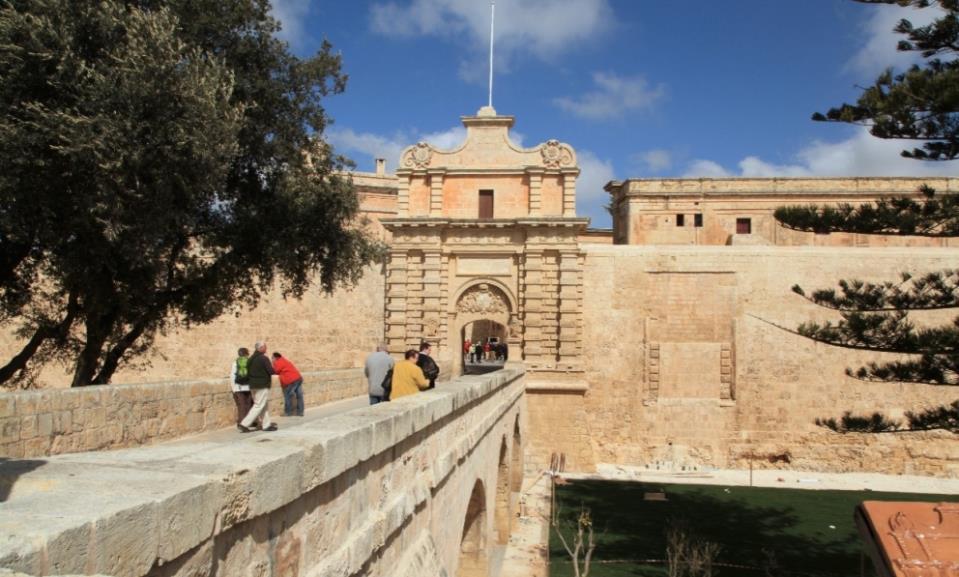
The gate we see today was actually moved by Mondion a few metres to the left of its original location.
In the medieval period, one would enter the city by passing through no less than three successive gates, all separated from each other by a courtyard.
While this provided additional security in the case of an attack, the system was simplified when the whole space was demolished to make way for the construction of Vilhena Palace, with the new singular gate being moved a short distance away.
To the right-hand side of the present gate, the outline of the medieval blocked entrance is still clearly visible.
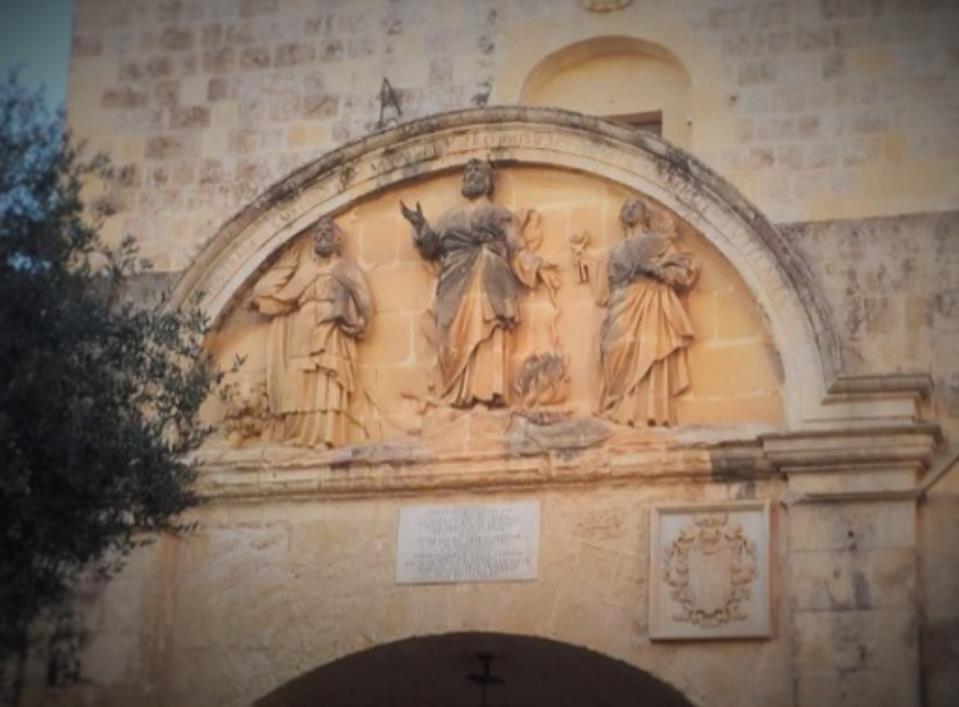
A quick look back upon entering the city reveals another series of interesting carvings on the inside of the structure. Directly above the doorway, a stone relief portrays a scene from the 1429 siege, when a large force of Tunisian Saracens was held at bay by the local militia, following a fierce three-day battle that resulted in heavy losses among the local population.
Another sculpture is that depicting St. Paul flanked by St. Publius and St. Agatha. Today, the Mdina Gate is one of the most photographed landmarks in Malta and even appeared in the popular television series Game of Thrones as the entrance to the fictional city of King’s Landing.
Vilhena Palace
Upon entering Mdina, the first major landmark is Vilhena Palace - another project commissioned as part of the city’s revival following the 1693 earthquake.
Estimated at 7.4 on the Richter scale, the earthquake’s epicentre was located off the eastern coast of Sicily. It was the most powerful earthquake in Italian history, destroying whole settlements and causing the deaths of up to 60,000 people.
Despite no recorded casualties in Malta, numerous buildings suffered structural damage, resulting in collapse or the need to demolish them due to structural concerns. Mdina was particularly affected.
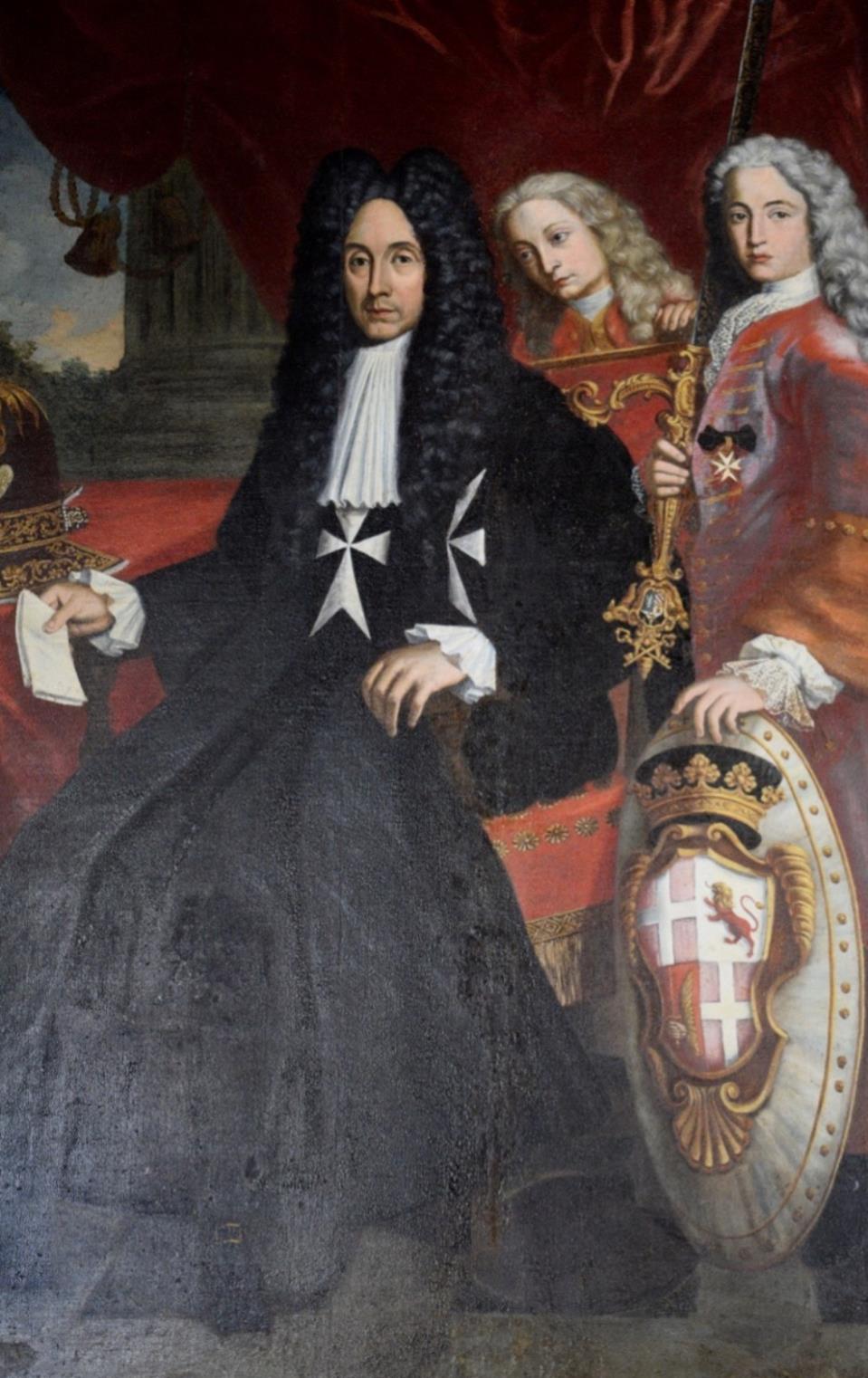
After Vilhena became Grand Master in 1722, he commissioned a number of major projects around the Maltese islands, including the development of a new suburb just outside Valletta, eventually named Floriana, as well as the building of Fort Manoel and the Manoel Theatre.
Probably his most significant project, however, was the revival of Mdina, which was to lead to the introduction of Baroque architecture into the medieval city.
Built on the site of an earlier structure, Vilhena Palace became the Grand Master’s summer residence.
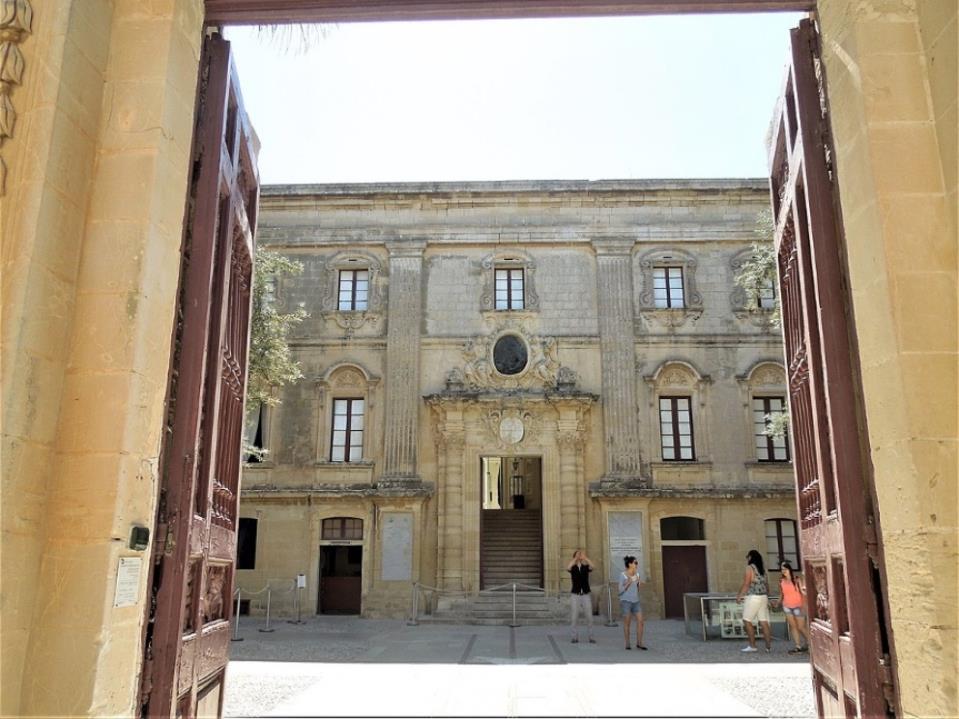
During the British era, however, the building mostly served as a hospital, starting from the 1837 cholera outbreak.
In 1860, it was converted into a sanatorium by the British military, and after a brief closure, it was once more reopened in 1909 by King Edward VII, to treat tuberculosis patients.
Named after Prince Arthur, Duke of Connaught and Strathearn - who had donated medical equipment - the Connaught Hospital remained operational until the 1950s, before being transformed into the National Museum of Natural History in 1973.
Corte Capitanale & Herald’s Loggia
Vilhena Palace is linked to the Corte Capitanale, which was built simultaneously.
Consisting of the criminal and civil courts, this was the oldest court of justice in Malta, with jurisdiction over the areas outside the harbour cities.
Its direct physical connection to Vilhena Palace was a symbolic message that the courts were under the jurisdiction of the Order of St. John, but despite this, the Corte Capitanale had its own entrance and façade, located around the corner, facing what is now the Xara Palace hotel.
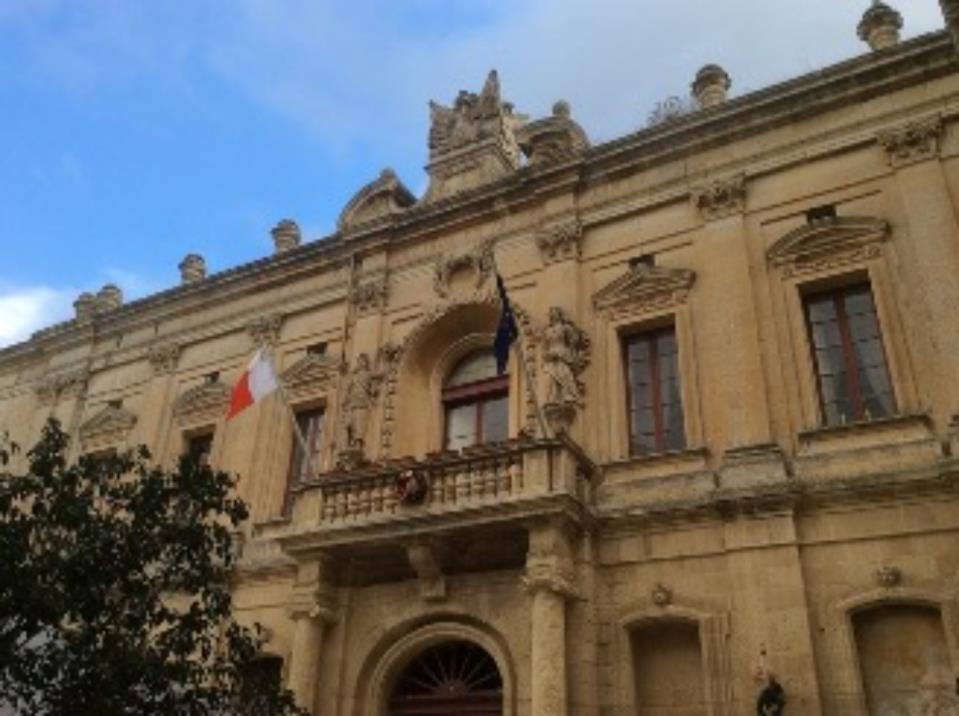
The balcony above the building’s main door is flanked by two allegorical figures representing Mercy and Justice, which together with the Latin inscription Legibus et Armis reflect the building’s former role.
The courthouse incorporates within it some underground prison cells, which would have held those awaiting trial, as well as condemned criminals awaiting execution on nearby Saqqajja Hill: Pjazza Forok in nearby Rabat is thus named because it was the site where hangings used to take place.
The Corte Capitanale was abolished in 1813 by British Governor Sir Thomas Maitland, as part of his reform of the justice system. The building today serves as the seat of the Mdina Local Council.
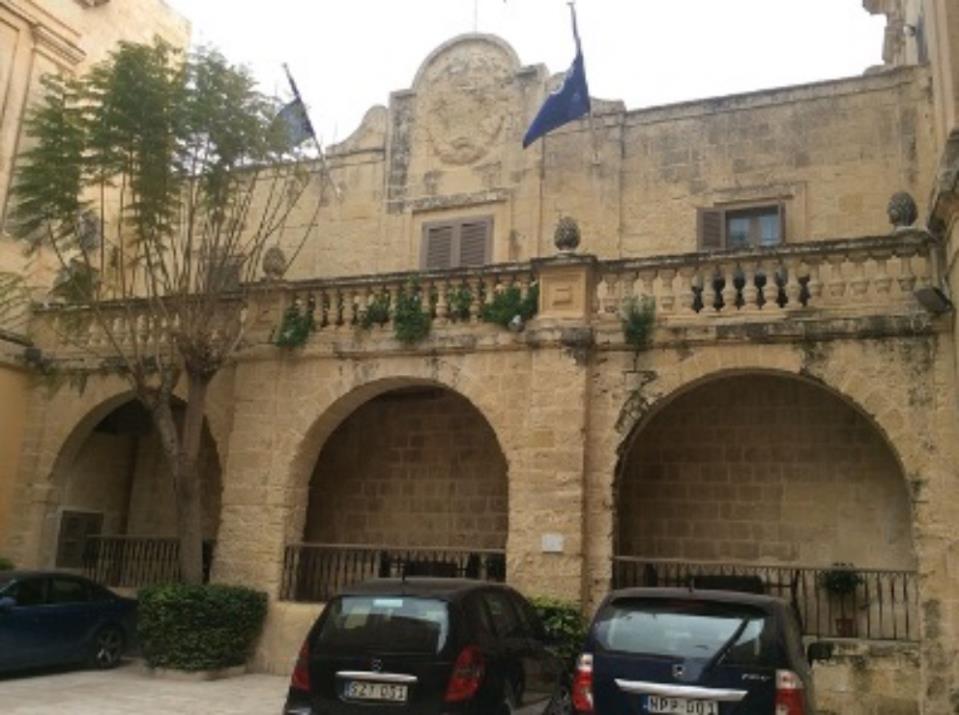
The aforementioned building is also connected to another curious structure in the form of a three-arched loggia.
This structure, which predates the courthouse, was constructed in the 17th century and was once used by town criers to read out the latest laws, rules and regulations that were passed by the city’s municipal council - the Mdina Università. This place is still referred to as the Herald’s Loggia.
St. Peter's Church and Monastery
One of the more mysterious buildings in Mdina is the Benedictine monastery for cloistered nuns dedicated to St. Peter.
This place is the perfect embodiment of the term ‘Silent City’ which is often bestowed on Mdina.
Dating back to the 15th century, when the Benedictine community was first established here, the building still performs its original role.
It is said that in the past, when rules were very stringent, no male was ever allowed to enter the convent’s walls, except perhaps those rendering essential services, while the nuns who joined never saw the outside world again, even being buried in the crypt of the adjoining church after their death.
Theirs was a life of pious and strict devotion.
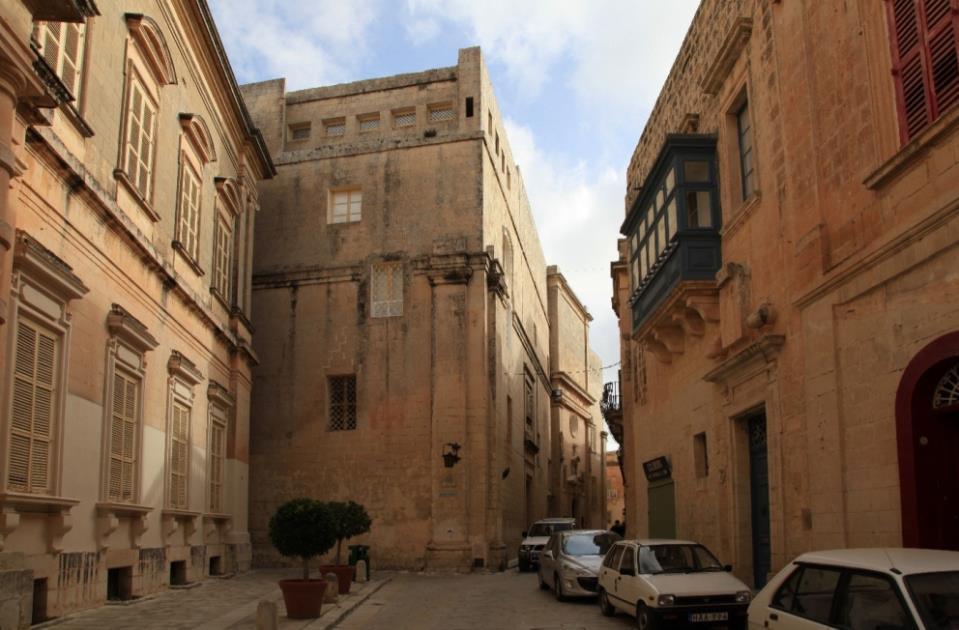
The church dedicated to St. Peter and St. Benedict was referenced by Bishop Cubelles in a report from 1555, but the present structure is the result of renovations that took place in the following century.
Despite the relatively simple exterior, the inside of the church is richly decorated, with the titular painting by Mattia Preti depicting the Madonna and Child with St. Peter, St. Benedict and St. Scholastica.
Other paintings are attributed to the Maltese 18th century painter Francesco Zahra. Undoubtedly the most prized possession, however, is an urn containing the remains of one of the convent’s previous abbesses.

Born in Naples in 1806 to a wealthy Maltese baron and an Italian mother, Maria Teresa Pisani endured a very unhappy childhood: her father was an alcoholic, which led to serious marital problems, and the young Maria Teresa was entrusted to the care of her paternal grandmother, who passed away when the girl was only ten.
Maria Teresa was thus sent to a Neapolitan boarding school, but after her father became involved in a political uprising, he was deported back to Malta, with his wife and daughter following soon after.
It was then that Maria Teresa decided to become a nun, renouncing her wealth, and preferring instead to lead a quiet, religious life, dedicated to helping the poor.
Upon joining the cloistered nunnery of Mdina - her home for the remaining 25 years of her life - she took the name Maria Adeodata.
She died in 1855, aged 48, and was buried in the crypt of the monastery. Sister Adeodata was admired by all who knew her for her spirituality and pious life, and many regarded her as a saint.
A strong devotion towards her soon developed and people claimed to have been miraculously healed through her intercession.
Although her case was brought to the attention of the Vatican in the 1890s, it was not until 2001 that she was finally beatified by Pope John Paul II, and now awaits canonization. Her feast is celebrated every 25th February.
Milestone in St. Paul’s Square
One of the more inconspicuous features in Mdina is the old British milestone found in St. Paul’s Square, which belongs to a series of such landmarks that had at one point become common features of the Maltese rural and urban landscape.
Carved out of local coralline limestone, they served to indicate the distance in miles between their position and Valletta.
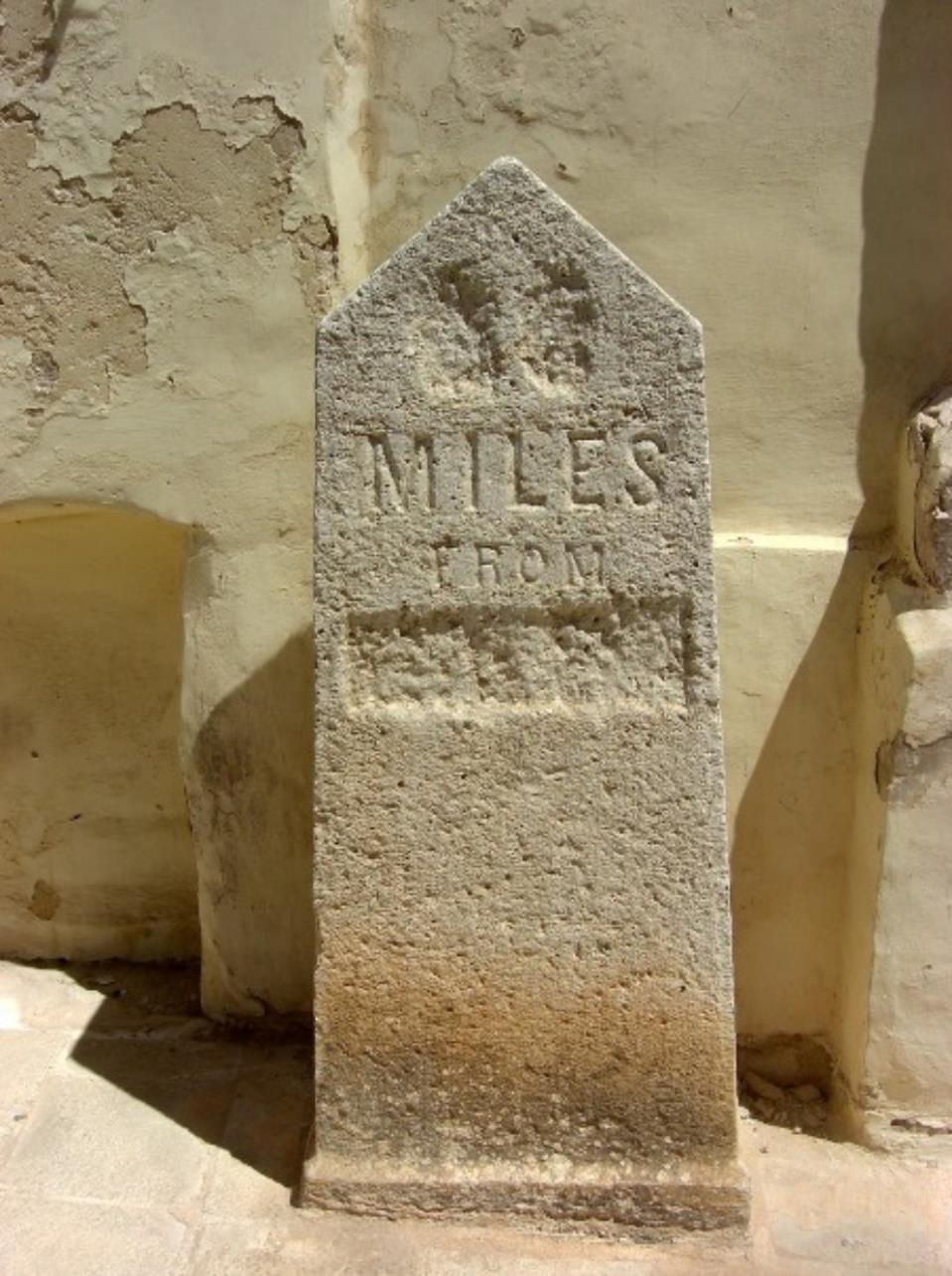
Although this particular example - like the majority of surviving ones - has had all of the important information chiselled away, this was not the result of vandalism but was deliberately done during World War Two.
Early in the war, Nazi Germany had demonstrated the efficacy of airborne troops, particularly during the invasion of the Low Countries.
In May 1941, another large-scale assault by German airborne forces led to the fall of Crete. The British were convinced that Malta would be next, and thus no time was wasted in introducing measures to deter such an invasion.
All road signs and milestones were defaced, in the hope that any newly-landed paratroopers would find it difficult to orientate themselves. Although the Axis powers did plan to invade Malta using both airborne and seaborne troops, the plans were eventually discarded.
As for the few surviving milestones today, they are mostly defaced, although a few extremely rare examples did survive intact.
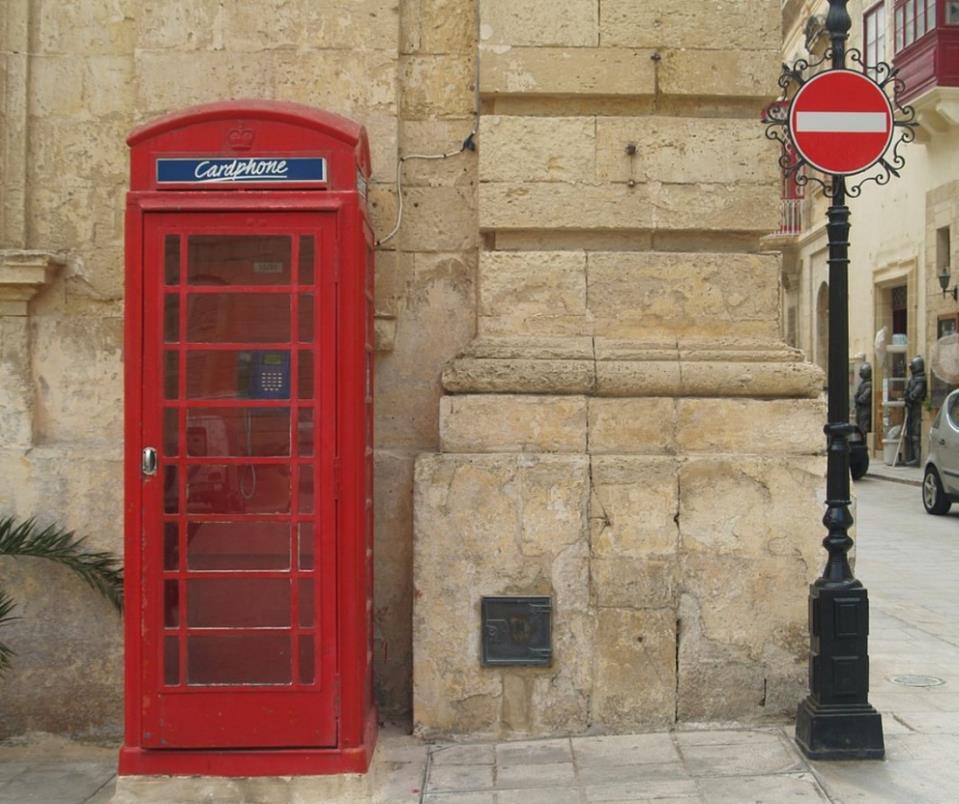
The milestone is not the only British feature in this square: at the opposite end, there is an old red telephone booth, as well as a post box with the Royal cypher of King Edward VII.
Though seemingly out of place in a city like Mdina, in truth they are the perfect example of the odd but rich mixture of foreign influences that make up this fascinating city.
The Malta Railway
Another relatively inconspicuous feature is the hole-in-the-wall entrance found along Magazine Street.
Although created much later than the two original gates of Mdina, this too has an interesting story behind it, having been specifically created in the late 19th century to facilitate access to the nearby train station that was then in operation.
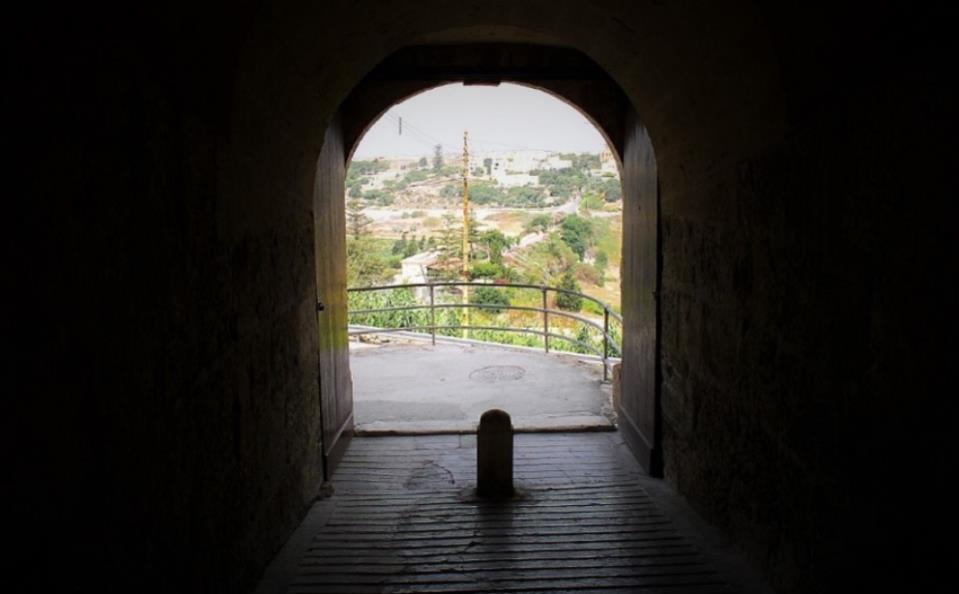
The Malta Railway was the first means of mechanised mass transportation on the island. Known locally as ‘il-vapur tal-art’, it was intended to shorten the time of travel between Valletta and Mdina.
The line was opened on 28th February 1883, when the first train left Valletta.
The journey, which by horse-drawn carriage normally took around three hours, was significantly reduced to around 30 minutes.
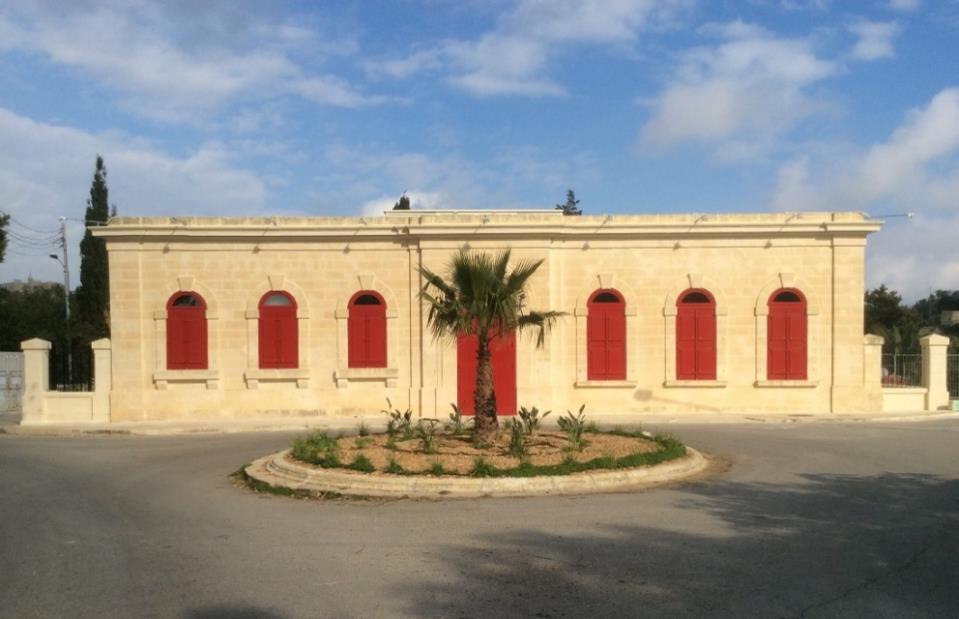
Sadly, the company that operated the railway soon went bankrupt, but the network was reopened after being acquired by the government, which led to improvements and an extension of the line through an underground tunnel beneath Mdina to service the military barracks at Mtarfa.
The former Museum Station is still visible from the opening in the Mdina bastions, just a short distance away from the city, although it is now a restaurant.
After all, the Malta Railway stopped operating in 1931.
Today, one of the few reminders that it ever existed is this opening in Mdina’s walls, which perhaps also serves as the link between the ancient city and the modern world outside it.
Matthew Camilleri is Tours Manager at Colour My Travel
Want to learn more interesting facts about Mdina? Join Colour my Travel's Complete Mdina Tour. Bookings from www.colourmytravel.com